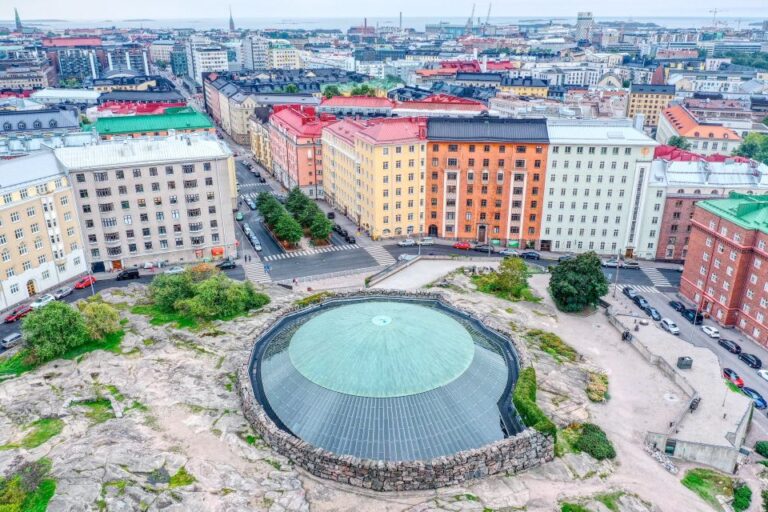The reign of the Nazi regime in Germany during the Third Reich and the horrors of World War II left an indelible mark on the city of Berlin. This tour takes visitors on a journey through the capital’s dark past, shedding light on the devastating impact of Hitler’s sinister ambitions. From the remains of the Führer’s bunker to the headquarters of the Gestapo and SS, the tour offers a compelling and sobering exploration of a pivotal era in German history. As participants uncover the stories behind these haunting sites, they’ll gain a deeper understanding of the complexities and tragedies that have shaped the city’s legacy.
Key Points
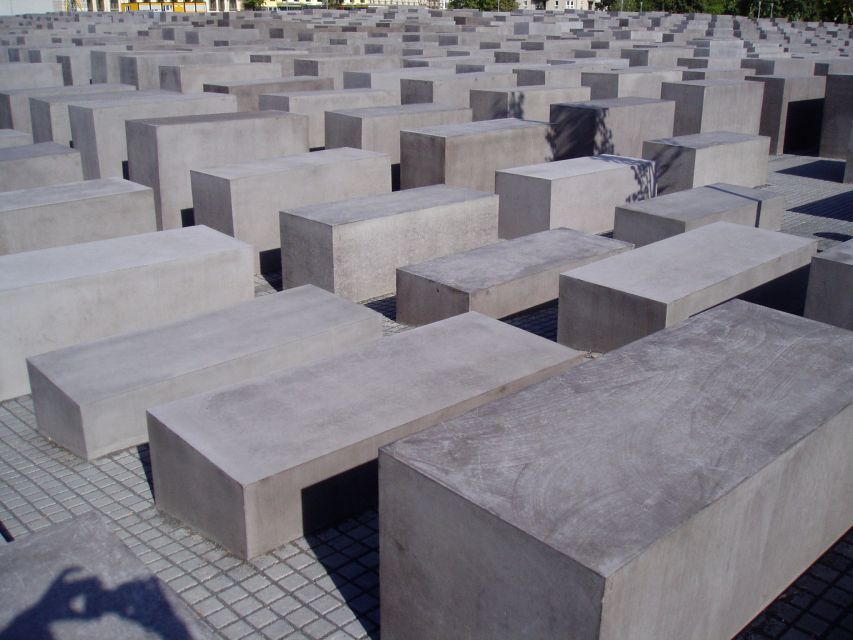
- This guided walking tour in Berlin provides an in-depth exploration of the city’s history during the Third Reich and World War II.
- The tour allows visitors to explore Berlin’s dark past at their own pace, including visiting sites like Hitler’s bunker and the former Nazi government district.
- The tour highlights the chilling legacy of the Third Reich’s grip on Berlin, including the Gestapo and SS headquarters and their role in Nazi atrocities.
- The tour commemorates the genocide of the Sinti and Roma peoples, as well as the political leaders imprisoned by the Nazi regime.
- The tour serves as a sobering reminder of the fragility of democracy and the importance of learning from the atrocities of the past.
Tour Overview
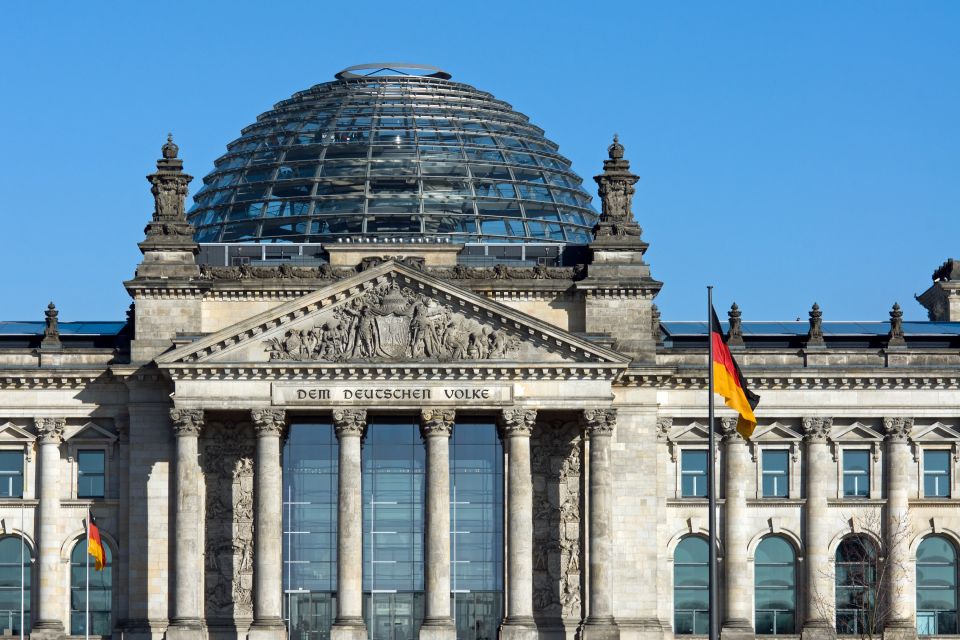
This 4-hour guided walking tour in English provides an in-depth exploration of Berlin’s history during the Third Reich and World War II. The tour is available as a private or small group experience, allowing visitors to explore the city’s dark past at their own pace.
Highlights include visiting the site of Hitler’s infamous bunker, discovering the former New Reichschancellery, and exploring Goebbels’ Propaganda Ministry and Goering’s Air Ministry headquarters. Guests will also roam the remains of Himmler’s notorious SS and Gestapo offices, known as the Topography of Terror.
Throughout the tour, participants gain a deeper understanding of this pivotal era in German history through the eyes of expert guides.
Tour Highlights
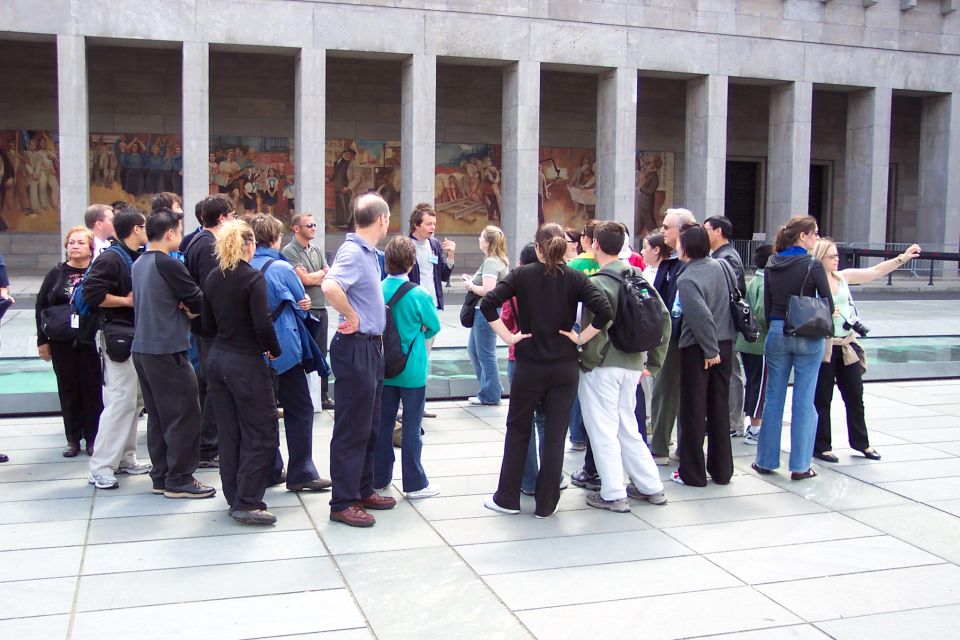
Visitors can start their tour by exploring the site of Hitler’s infamous bunker, where the Nazi dictator spent his final days as Berlin fell to the Soviets.
They’ll then discover the once-terrifying New Reichschancellery, the seat of Hitler’s government.
Next, they’ll explore Goebbels’ Propaganda Ministry, a chilling reminder of the regime’s manipulation of the masses.
Passing by Goering’s famous Air Ministry, guests will roam the remains of Himmler’s SS and Gestapo Headquarters, known as the Topography of Terror.
This powerful tour provides a sobering glimpse into the dark heart of the Third Reich, offering a visceral connection to the city’s tumultuous past.
Tour Itinerary
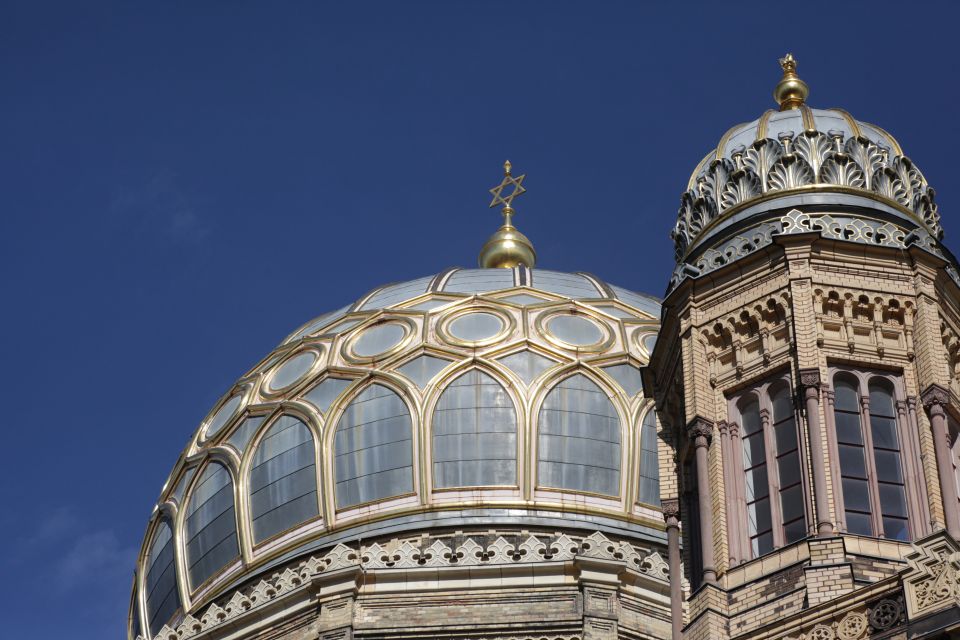
The tour begins in Berlin’s former Jewish district, providing a somber starting point to explore the city’s dark past under Nazi rule.
Visitors then move on to the destroyed Anhalter Bahnhof train station, once a hub of activity during the Third Reich.
From there, the group tours the former Nazi government district, including the chilling headquarters of the Gestapo and SS.
The Memorial to the Sinti and Roma Victims of National Socialism offers a chance to reflect on the Nazis’ atrocities.
The tour concludes at the Reichstag, the German parliament building, offering a contrast between the horrors of the past and the democratic present.
Destroyed WWII Train Station
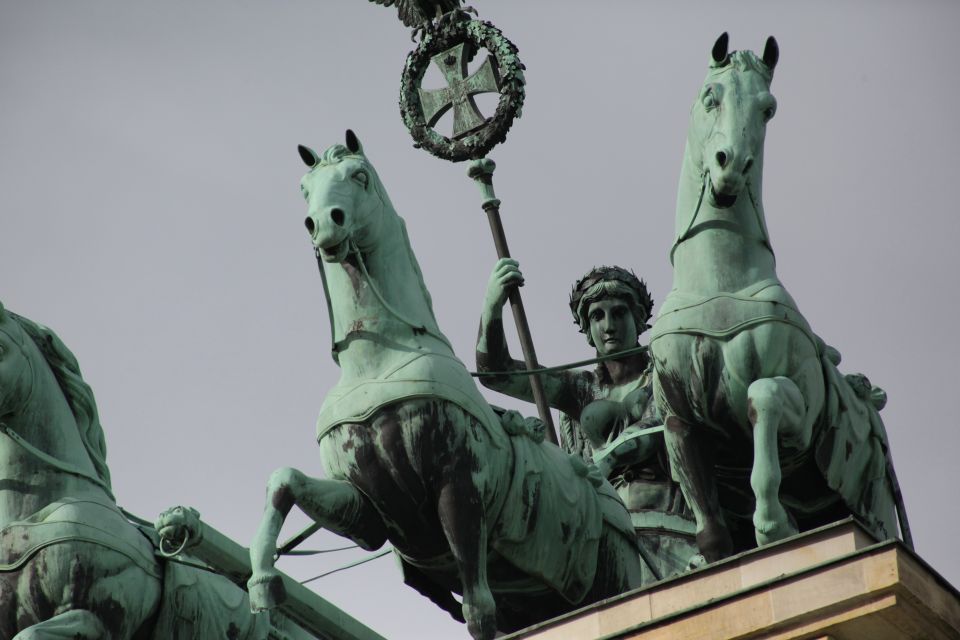
Anhalter Bahnhof, once a bustling train station during the Third Reich, now stood as a haunting reminder of the devastation wrought by World War II. This once grand terminal, which had played a vital role in the transportation of goods and people throughout the Nazi regime, was now reduced to a pile of rubble. The station’s destruction was a testament to the intensity of the Allied bombing campaigns that had targeted Berlin’s infrastructure, leaving behind a stark memorial to the horrors of the past.
| Anhalter Bahnhof | Historical Significance |
|---|---|
| Bustling train station | Vital role in Nazi transportation |
| Reduced to rubble | Targeted by Allied bombing |
| Haunting reminder | Devastation of WWII |
| Memorial to horrors | Intensity of bombings |
| Stark monument | Berlin’s infrastructure destroyed |
Former Nazi Government District
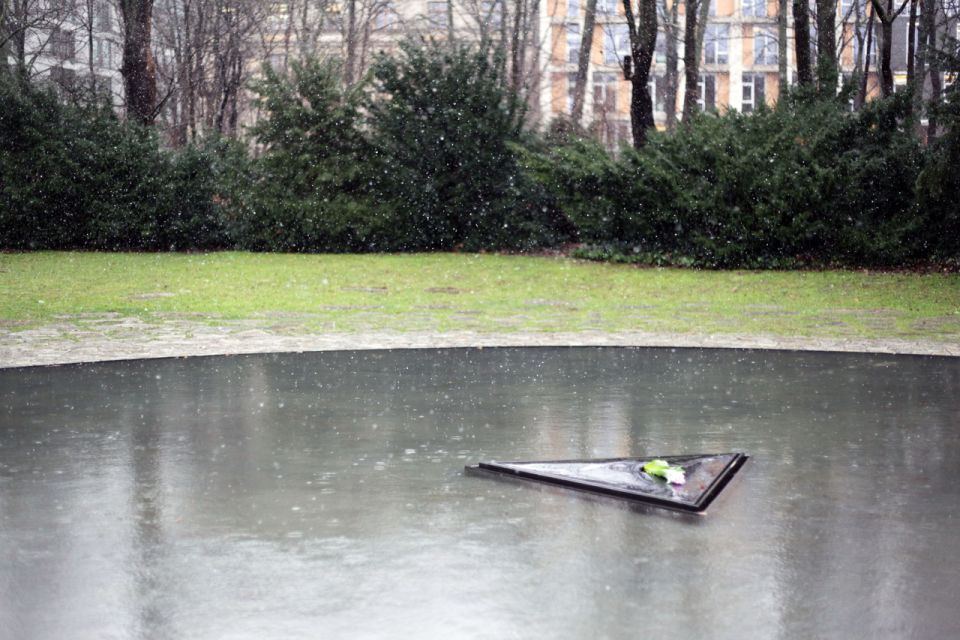
Moving from the haunting remnants of the destroyed Anhalter Bahnhof, the tour explores the once-formidable nerve center of the Nazi government district, where the party’s most influential figures wielded their power.
Visitors will walk the same streets that Hitler, Goebbels, and Goering once controlled, as they uncover the imposing New Reichschancellery and the Propaganda Ministry.
The tour delves into the dark history of this area, revealing the chilling legacy of the Nazi regime’s grip on the capital.
Through this immersive experience, participants gain a deeper understanding of the Third Reich’s presence in Berlin and the lasting impact it had on the city’s landscape and psyche.
Gestapo and SS Headquarters
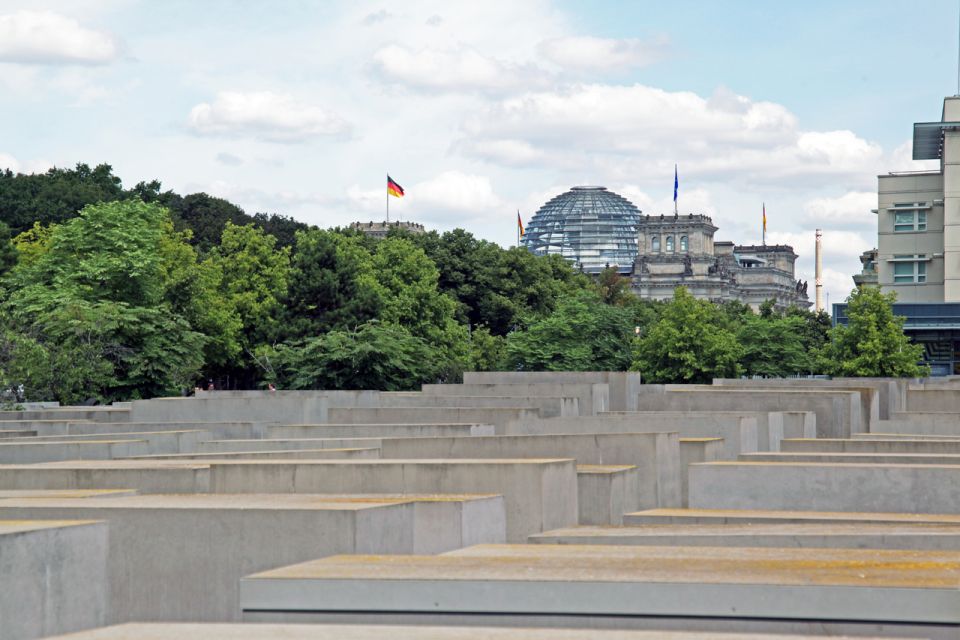
Visitors then explore the chilling remnants of Himmler’s SS and Gestapo Headquarters, known as the Topography of Terror. This somber site reveals the horrific abuses and terror tactics employed by these notorious Nazi organizations during their reign of power.
Guests learn about the sinister activities that took place within these walls and the far-reaching impact the Gestapo and SS had on the city and its people.
The tour highlights three key aspects of this dark chapter:
- The Gestapo’s use of torture and intimidation to suppress political opposition.
- The SS’s orchestration of the mass genocide of Jews, Roma, and other minorities.
- The chilling legacy of these institutions and their role in the horrors of the Nazi regime.
Memorial for Sinti and Roma
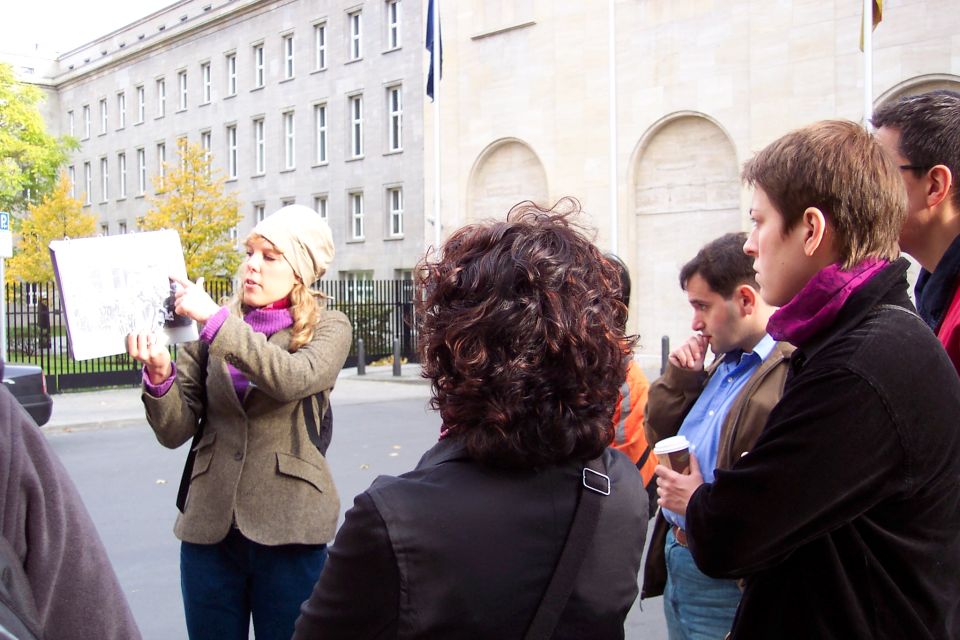
Why does the tour route include a visit to the Memorial to the Sinti and Roma Victims of National Socialism? This solemn monument commemorates the genocide committed against the Sinti and Roma peoples by the Nazi regime.
Tens of thousands of these individuals were murdered in concentration camps and through other systematic persecution during the Third Reich’s reign of terror. The tour explores this dark chapter of history, helping visitors understand the full breadth of the Nazis’ crimes against humanity.
Standing before the memorial, guests can reflect on this tragic legacy and honor the memory of those who suffered and perished under the brutal Nazi occupation of Berlin.
Memorial for Arrested Politicians

The tour next explores the Memorial for 96 Politicians Arrested by the Nazis, a somber monument honoring those political leaders who were illegally imprisoned by the fascist regime.
This site pays tribute to the courageous individuals who resisted the Third Reich’s authoritarian rule, often at great personal risk. The memorial highlights the importance of upholding democratic values even in the face of oppression.
It serves as a reminder of the sacrifices made to protect civil liberties and freedom of speech. The memorial’s simple yet powerful design invites visitors to reflect on the fragility of democracy and the ongoing struggle to safeguard it.
Honoring political prisoners who stood up to tyranny
Highlighting the fragility of democracy under fascist rule
Inspiring visitors to defend democratic values and civil liberties
Frequently Asked Questions
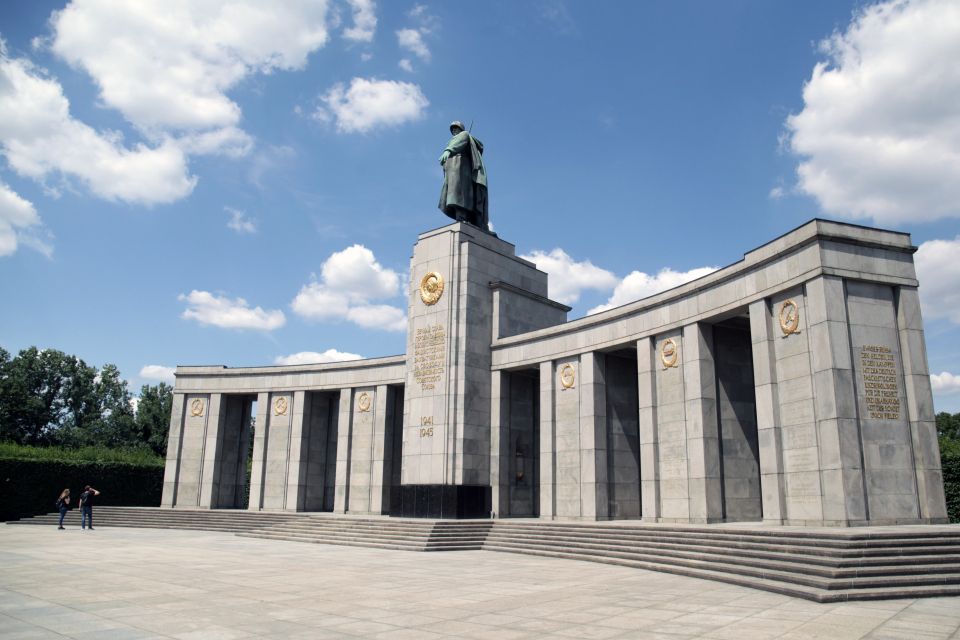
How Did Hitler Come to Power in Germany?
Hitler rose to power in Germany through a combination of political maneuvering, manipulation of the public, and the weaknesses of the Weimar Republic. He used populist rhetoric and the fear of communism to gain support and become Chancellor in 1933.
What Happened to the Nazi Leadership After World War Ii?
After WWII, the Nazi leadership faced harsh consequences. Many were arrested, convicted at the Nuremberg Trials, and executed or imprisoned. Others committed suicide or fled Germany. The Nazi regime was dismantled, and Germany underwent denazification.
How Did the German Public View the Nazi Regime?
The German public’s view of the Nazi regime was complex, with some supporting Hitler’s populist policies, while others were intimidated into compliance or opposed the regime’s extremism. Public opinion shifted over time as the realities of Nazi rule became clear.
How Did the Nazi Regime Affect the Lives of Ordinary Germans?
The Nazi regime had a profound impact on the lives of ordinary Germans. It stripped away personal freedoms, enforced conformity, and subjected citizens to surveillance, persecution, and even imprisonment or death if they opposed the regime’s ideology.
What Role Did the German Military Play in the Nazi Regime?
The German military was the primary force that implemented the Nazi regime’s policies and expansionist agenda. They played a vital role in the conquest and occupation of foreign territories throughout Europe during World War II.
Recap
This comprehensive tour offers a profound and sobering exploration of Berlin’s dark past during the Third Reich and World War II.
Visitors can explore the devastating impact of the Nazi regime, gaining valuable insights into this complex and troubling chapter of history.
Through this immersive experience, participants come away with a deeper understanding of the horrors that unfolded in the city.


